RATS (Ordinals) Meme Coin Explained: What It Is, How It Works, and Risks
RATS Token Value Calculator
Current RATS Market Data
RATS price: $0.00002732 per token
24-hour volume: $18.7M
Calculate Your RATS Value
Your RATS tokens are worth:
$0.00
Ever wondered why a meme token is hanging out on Bitcoin’s blockchain? RATS crypto is the quirky experiment that brings meme culture to the world’s most secure ledger, and it’s causing a stir even though each token is worth a fraction of a cent.
What is RATS (Ordinals)?
RATS (Ordinals) is a meme cryptocurrency token built on the Bitcoin Ordinal Protocol. Launched in 2023 by anonymous developers in the Ordinals community, RATS aims to prove that meme tokens don’t need Ethereum‑style smart contracts to exist. Instead of an ERC‑20 contract, every RATS token lives as an inscription on an individual satoshi - the smallest Bitcoin unit.
How the Bitcoin Ordinal Protocol Makes It Possible
Bitcoin Ordinal Protocol is a system that allows arbitrary data to be attached to single satoshis. Developed by Casey Rodarmor and activated in February2023, the protocol turned Bitcoin from a pure settlement layer into a platform for NFTs, digital art, and now meme tokens. When a developer inscribes data, the satoshi becomes a unique digital artifact that can be tracked, transferred, and displayed in compatible wallets.
Tokenomics and Market Data
RATS trades at roughly $0.00002732 (USD) as of 17Oct2025, with a 24‑hour volume of about $18.7million. Paradoxically, CoinMarketCap lists the token with a zero market cap because the reported circulating supply is inconsistent - some sources say none, others estimate billions of tokens in existence. This opaque supply metric is a red flag for anyone evaluating the token’s fundamentals.
Price movement has been volatile: a 2.93% rise in the last 24hours, an 8.86% boost over a week, and a 28.85% gain in the past month. Technical analysis on TradingView tags RATS with a “buy” rating based on oscillators and moving averages, but those signals ignore the deeper issue of missing utility and unclear token distribution.
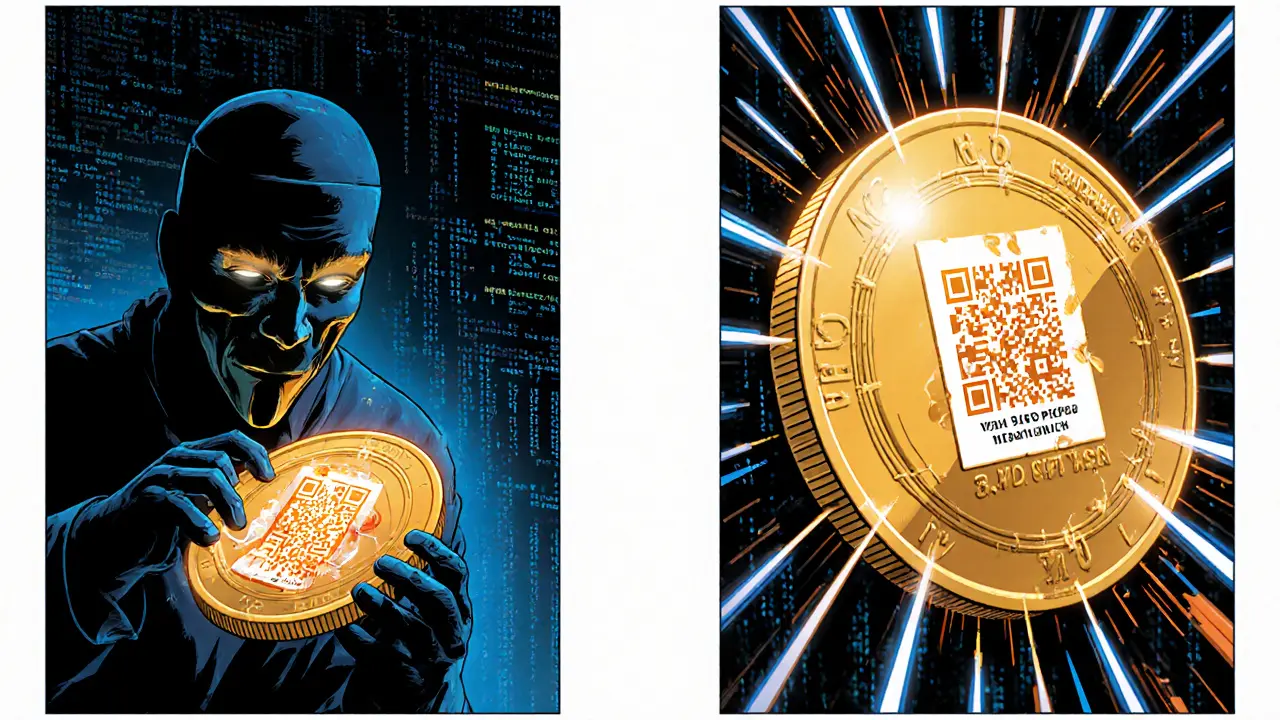
How to Buy and Store RATS
Purchasing RATS isn’t as simple as buying a Bitcoin or an Ethereum token. You need an exchange that supports Ordinal assets. The most common choices are Binance, Bybit, and Nexus Trade. The typical six‑step flow looks like this:
- Create an account on one of the listed exchanges.
- Complete KYC verification (photo ID, proof of address).
- Deposit fiat or crypto (USDT, BTC, etc.).
- Search for the RATS market pair (e.g., RATS/USDT).
- Place a market or limit order.
- Hold RATS on the exchange or transfer to an Ordinal‑compatible wallet.
Withdrawals are tricky because most exchanges can only send RATS back to the same platform. If you want to move tokens off‑exchange, you need a wallet that understands Ordinals, such as Xverse or Leather. Both wallets display inscribed satoshis and let you receive RATS directly to a Bitcoin address.
Risks, Criticisms, and Regulatory Gray Areas
The biggest concern is the lack of any official documentation. RATS has no whitepaper, no named team, and no roadmap. Community‑maintained guides on GitHub are the only source of technical detail, and they’re often incomplete.
Regulators haven’t ruled on whether Ordinal‑based tokens count as securities. After Gary Gensler’s October2024 remarks, the SEC’s stance remains ambiguous, meaning that future legal actions could impact liquidity or even force delistings.
Other practical risks include:
- High Bitcoin transaction fees (often $20-$30 per transfer).
- Slow confirmation times compared to Ethereum or Solana.
- Potential wash‑trading, suggested by the disparity between zero market cap and multi‑million‑dollar daily volume.
- Zero utility beyond speculative trading - there’s no staking, governance, or native dApp.
RATS vs. Other Meme Tokens
Below is a quick snapshot of how RATS stacks up against classic meme coins.
| Metric | RATS (Ordinals) | Dogecoin (DOGE) | Shiba Inu (SHIB) | Bonk (BONK) |
|---|---|---|---|---|
| Launch Year | 2023 | 2013 | 2020 | 2023 |
| Base Layer | Bitcoin Ordinals | Dogecoin blockchain | Ethereum | Solana |
| Typical Transaction Fee | $20‑$30 (BTC) | ~$0.01 | ~$0.02 | ~$0.001 |
| Current Price (USD) | $0.000027 | $0.074 | $0.000012 | $0.0001 |
| Market Cap (approx.) | ~$0 (reported) | $10B | $7B | $300M |
| Utility | Speculative only | Payments, tipping | DeFi, NFTs | Gaming, NFTs |
RATS’ unique selling point is Bitcoin’s security, but that comes at the cost of speed and cost‑efficiency. For traders who love the novelty of Bitcoin‑native memes, RATS is appealing; for anyone seeking real utility, the other tokens are far ahead.
Future Outlook and Price Predictions
Analysts are divided. Changelly’s September2025 model forecasts a modest climb to $0.000032 by year‑end 2025 and up to $0.00015 by 2029, assuming the Ordinals ecosystem keeps expanding. Conversely, WalletInvestor and Bitget warn of a possible dip below $0.000025 if hype wanes. The common denominator in every forecast is “high risk.” If the Ordinals protocol matures and more Bitcoin‑native NFTs attract mainstream users, RATS could ride that wave. If the community loses interest, the token may fade into obscurity.
Key Takeaways
- RATS is a meme token that lives on the Bitcoin blockchain via the Ordinal inscription system.
- Its price is tiny, but daily trading volume is surprisingly high compared to its reported market cap.
- Buying requires an exchange that supports Ordinals and an Ordinal‑compatible wallet like Xverse or Leather.
- Major risks include zero transparency, possible wash‑trading, high fees, and regulatory uncertainty.
- Compared to DOGE, SHIB, and BONK, RATS offers Bitcoin security but lacks utility and suffers from higher transaction costs.
Frequently Asked Questions
What does the “Ordinals” part mean in RATS?
Ordinals is the protocol that lets developers embed data onto individual satoshis. RATS tokens are simply pieces of data inscribed on those satoshis, making them Bitcoin‑native assets.
Can I store RATS in a regular Bitcoin wallet?
No. Regular wallets ignore the extra data. You need an Ordinal‑compatible wallet (e.g., Xverse or Leather) that can display and manage inscribed satoshis.
Why does CoinMarketCap list RATS with a $0 market cap?
The platform can’t verify a reliable circulating supply. Some data providers even report a circulating supply of zero, leading to a calculated market cap of $0 despite active trading.
Is RATS considered a security?
The SEC has not issued a definitive ruling. Regulatory guidance treats most meme tokens as commodities, but the unique Ordinal structure leaves a gray area. Investors should assume the risk.
What are the biggest fees I’ll face when moving RATS?
Because each transfer requires a Bitcoin transaction, fees follow Bitcoin’s network rates - often $20‑$30 per move, regardless of token amount.
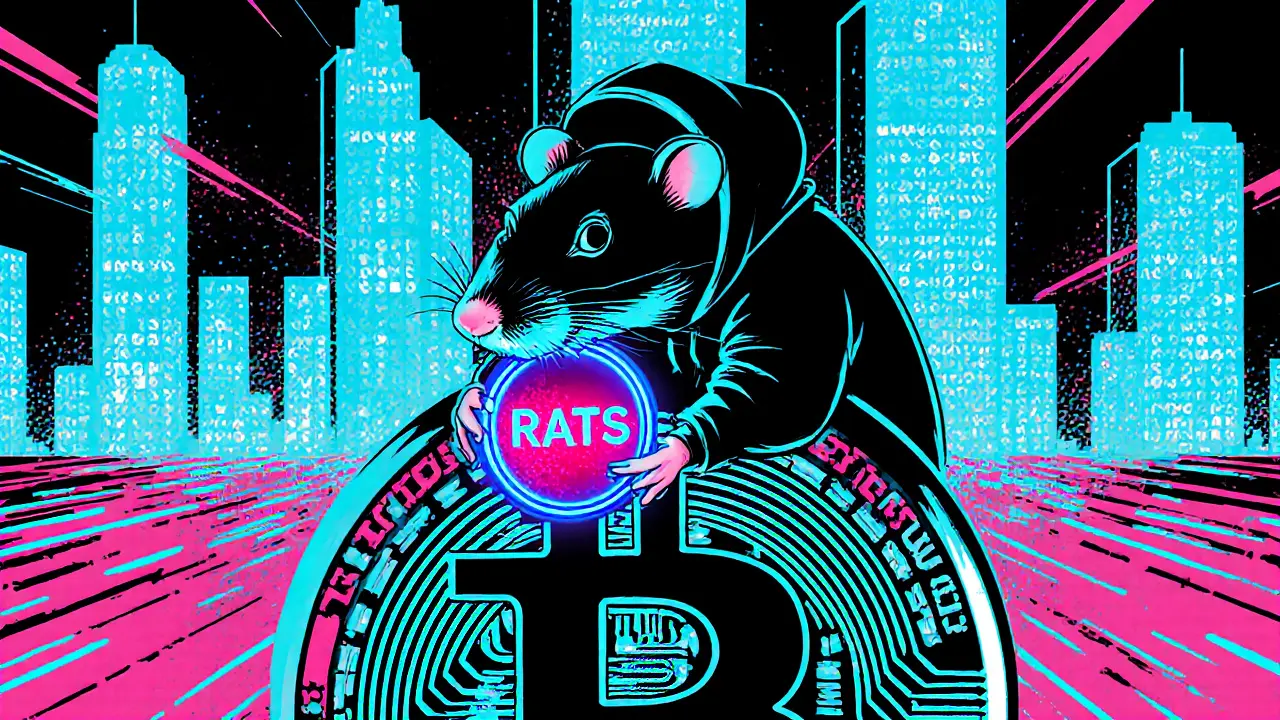
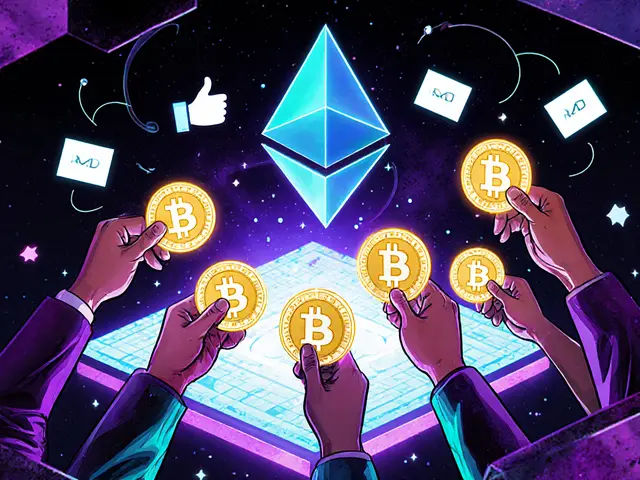
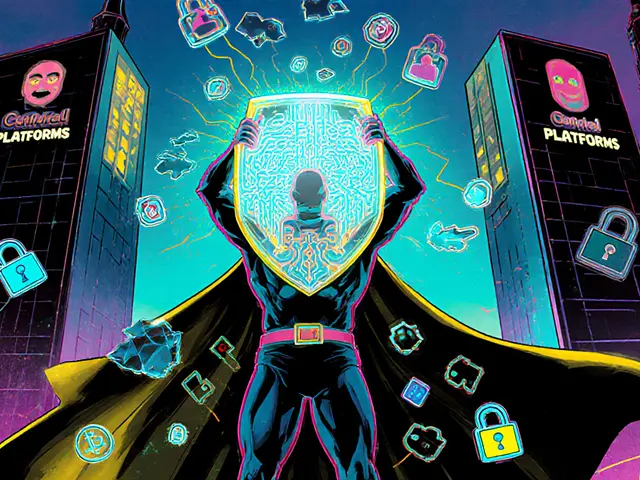

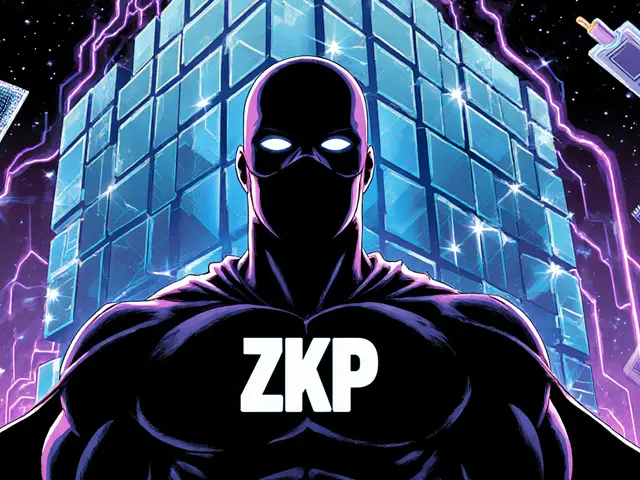
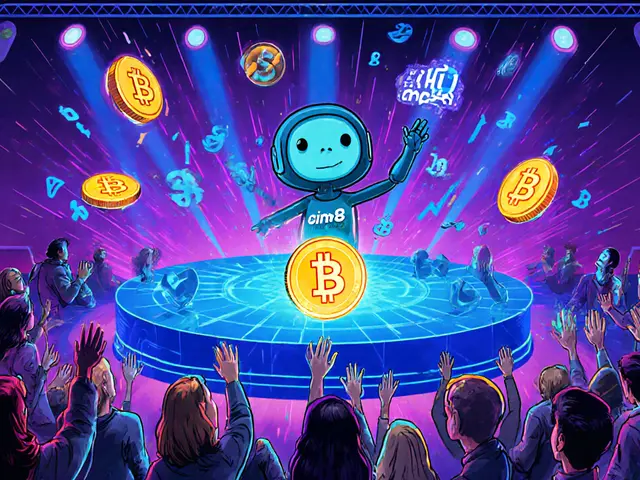
21 Comments
Devi Jaga
October 17 2025If you look at the tokenomics section, the opaque supply figures make RATS look like a classic wash‑trade circus. The protocol‑level on‑chain data is practically invisible, so every reported $0 market cap is a red flag. Add the $20‑$30 BTC fee per transfer and you’ve got a recipe for a liquidity nightmare. In short, it’s a meme‑token masquerading as a Bitcoin‑native experiment, but the fundamentals are as thin as a satoshi’s inscription.
Hailey M.
October 19 2025😂 Wow, the idea of a meme token on Bitcoin is like trying to fit a clown car into a rocket. Sure, it’s novel, but the transaction fees will eat your coffee budget faster than a pump‑and‑dump. Still, props for the creativity – who wouldn’t want to brag about owning a RATS‑inscribed satoshi? 🚀
Schuyler Whetstone
October 20 2025lol this whole RATS thing is just another hype train that’ll derail once the BTC fees hit your wallet. nobody’s writing a whitepaper, so you’re basically buying a piece of internet folklore with no real utility. it’s like paying for a digital squeaky toy – fun for a sec, then it’s just noise.
David Moss
October 22 2025People ignore the fact that the SEC could slap a securities label on any meme token that gains traction. if that happens, RATS might vanish faster than a deep‑state cover‑up. also, the whole "Bitcoin security" hype is just a smokescreen for the real danger: regulatory backlash.
Cecilia Cecilia
October 24 2025The requirement for an Ordinal‑compatible wallet adds friction that most casual traders won’t want to deal with. Without broad wallet support, adoption will remain niche at best.
lida norman
October 26 2025Exactly, the extra steps to store RATS feel like a labyrinth – open an exchange, pass KYC, then juggle a special wallet. 😅 It’s not surprising that many will just stay on the sidelines.
Miguel Terán
October 27 2025When you dive into the mechanics of the Ordinals protocol, you quickly realize that each satoshi becomes a unique data carrier, effectively turning Bitcoin into a minimalist NFT platform. This conversion, while technically ingenious, imposes a heavy cost structure because every inscription inherits Bitcoin’s base transaction fees, which hover around twenty to thirty dollars per move. Consequently, the marginal cost of transferring a single RATS token dwarfs its market value, eroding any potential arbitrage margin. Moreover, the lack of a standardized token contract means that token verification relies solely on the integrity of the inscription metadata, which can be altered or duplicated without a central authority to enforce consistency. The community’s reliance on GitHub read‑mes for token specifications introduces another vector for misinformation, as those documents are rarely audited or peer‑reviewed. From a liquidity perspective, the fact that most exchanges only permit withdrawals back to the originating platform creates a quasi‑closed ecosystem, stifling true on‑chain movement. This restriction also raises compliance concerns, as regulators may view the limited exit pathways as a form of market manipulation. The speculative nature of RATS is further highlighted by its volatile price swings, which, despite being modest in absolute terms, represent significant percentage moves driven almost entirely by hype cycles rather than intrinsic utility. In comparison to Ethereum‑based meme tokens, RATS lacks the composability that fuels DeFi integration, staking, or governance mechanisms, leaving it stranded as a pure speculation vehicle. While the novelty of Bitcoin‑native meme tokens may attract a subset of enthusiasts who value security over speed, the broader crypto market typically prioritizes efficiency and low transaction costs. As the Ordinals ecosystem matures, we might see layer‑2 solutions mitigate some of these fee challenges, but until then, the risk‑reward profile remains heavily skewed toward risk. Investors should therefore approach RATS with a clear understanding that its upside is primarily tied to the cultural cachet of being a Bitcoin meme, not to any sustainable economic model. In short, RATS exemplifies the experimental frontier of on‑chain data inscription, but its practical adoption hurdles are formidable.
Shivani Chauhan
October 29 2025I appreciate the thorough breakdown. It’s crucial to highlight how the fee structure alone can deter everyday users, especially those new to crypto. Understanding these technical nuances helps set realistic expectations for anyone eyeing RATS.
Deborah de Beurs
October 31 2025This token is a perfect illustration of a market being gamed by opportunists. The hype machine churns out absurdly high volumes while the actual utility stays at zero, which is a classic sign of a pump‑and‑dump scheme.
Sara Stewart
November 1 2025Spot on! The disconnect between reported market cap and trading volume is a red flag that should make any serious trader think twice before diving in.
Laura Hoch
November 3 2025From a philosophical angle, RATS raises the question of what value really means in the digital age. If a token exists solely as a speculative artifact, does it possess intrinsic worth, or is it merely a reflection of collective belief? The answer may lie in how communities assign meaning to such tokens, but until that consensus translates into tangible utility, the risk remains high.
Pierce O'Donnell
November 5 2025While it’s intriguing, the token feels more like a stunt than a sustainable project. In short, I’d stay skeptical.
Vinoth Raja
November 7 2025The jargon‑heavy nature of Ordinals can alienate newcomers, and without clear documentation the barrier to entry stays steep. It’s a niche play that may never break into mainstream adoption.
Kaitlyn Zimmerman
November 8 2025Exactly, offering clear step‑by‑step guides and wallet integration could lower that barrier, but until developers prioritize user‑friendliness, the audience will remain limited.
DeAnna Brown
November 10 2025RATS is just another meme frenzy, nothing more.
Chris Morano
November 12 2025Let’s stay optimistic; even if it’s a meme now, it could inspire future innovations on Bitcoin.
Ikenna Okonkwo
November 14 2025Balancing enthusiasm with caution is key – the project’s novelty is compelling, yet the practical risks can’t be ignored.
Bobby Lind
November 15 2025Indeed; the market loves novelty, but it also loves a good reality check. ;)
Jessica Cadis
November 17 2025From a cultural perspective, RATS showcases how meme culture can permeate even the most traditional blockchain, blurring lines between serious finance and internet humor.
Katharine Sipio
November 19 2025Thank you for highlighting that angle. It’s essential to recognize both the community spirit and the underlying economic realities.
Shikhar Shukla
November 21 2025While the cultural impact is noteworthy, one must critically assess whether such novelty translates into lasting value or merely a fleeting trend.